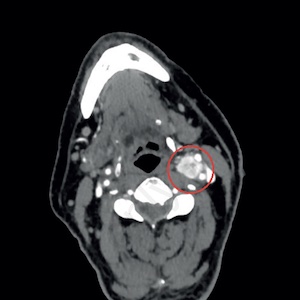A rare cause of recurrent syncope: chemodectoma of left carotid

Published: 31 May 2023
Abstract Views: 794
PDF: 317
HTML: 9
HTML: 9
Publisher's note
All claims expressed in this article are solely those of the authors and do not necessarily represent those of their affiliated organizations, or those of the publisher, the editors and the reviewers. Any product that may be evaluated in this article or claim that may be made by its manufacturer is not guaranteed or endorsed by the publisher.
All claims expressed in this article are solely those of the authors and do not necessarily represent those of their affiliated organizations, or those of the publisher, the editors and the reviewers. Any product that may be evaluated in this article or claim that may be made by its manufacturer is not guaranteed or endorsed by the publisher.

 https://doi.org/10.4081/itjm.2023.1585
https://doi.org/10.4081/itjm.2023.1585




